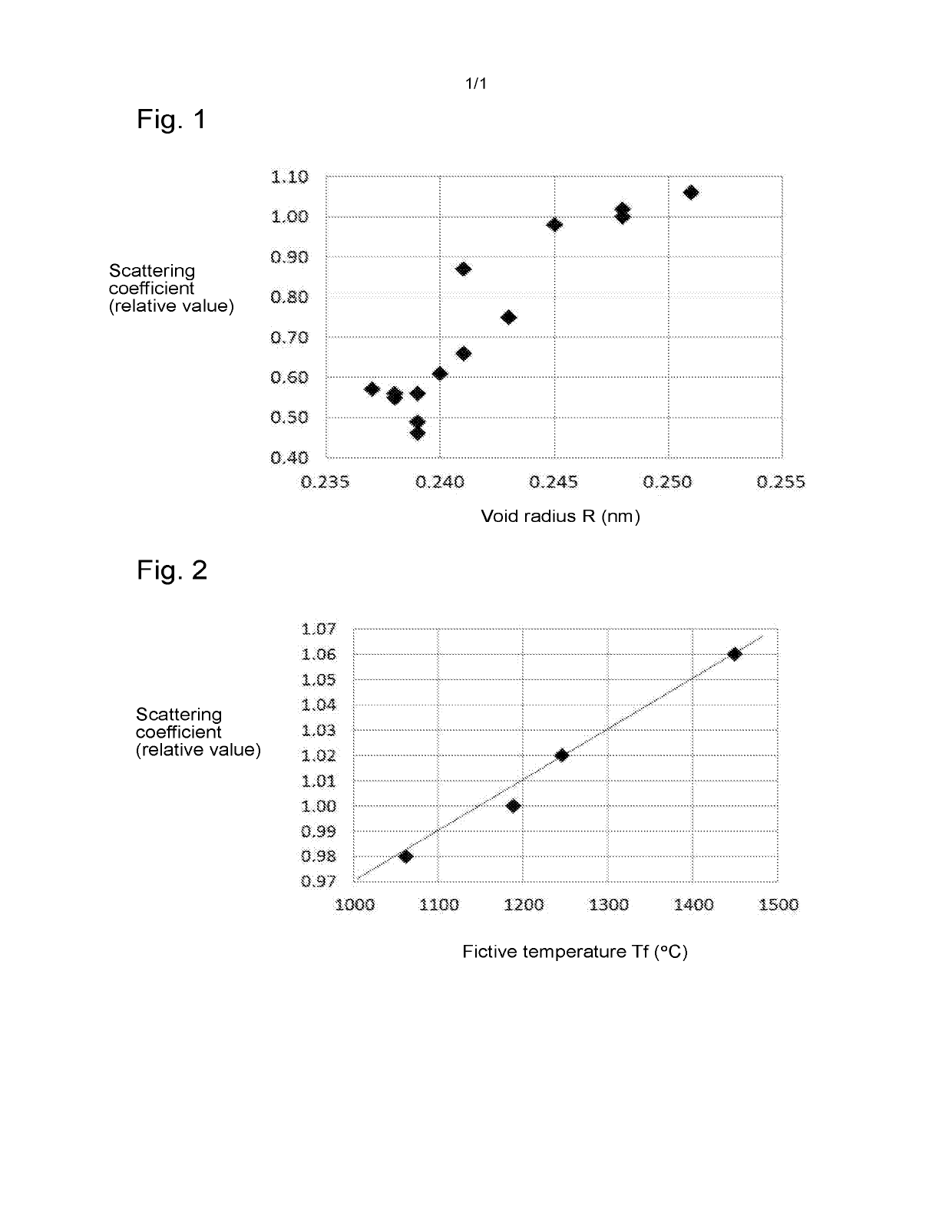Low scattering silica glass and method for heat-treating silica glass
a silica glass and low scattering technology, applied in glass making apparatus, glass shaping apparatus, glass making tools, etc., to achieve the effects of low optical transmission loss, high fictive temperature, and low scattering coefficien
- Summary
- Abstract
- Description
- Claims
- Application Information
AI Technical Summary
Benefits of technology
Problems solved by technology
Method used
Image
Examples
examples
[0086]Now, the present invention will be described in further detail with reference to Examples. However, it should be understood that the present invention is by no means restricted thereto.
[0087]Ex. 1 to 3, 6 to 8 and 14 are Examples of the glass of the present invention, and Ex. 4 to 5 and 9 to 13 are Comparative Examples.
[0088]Ex. 1 to 3, 6 and 14 are Examples of the first method of the present invention.
[0089]Ex. 7 and 8 are Examples of the second method of the present invention.
[Heat Treatment of Silica Glass]
Ex. 1 and 2
[0090]Dense silica glass having a OH content of less than 50 ppm was put in a pressure container and heated while the pressure of an argon gas as a pressure medium was increased by a pump using a HIP apparatus. The silica glass was held for 3.5 hours in a state where a pressure (unit: MPa) as identified in the section on pressure 1 in Table 1 or 2 was applied at 1,800° C., and then the pump was terminated and the silica glass was quenched. The average cooling r...
PUM
| Property | Measurement | Unit |
|---|---|---|
| fictive temperature | aaaaa | aaaaa |
| refractive index | aaaaa | aaaaa |
| temperature | aaaaa | aaaaa |
Abstract
Description
Claims
Application Information
 Login to View More
Login to View More - R&D
- Intellectual Property
- Life Sciences
- Materials
- Tech Scout
- Unparalleled Data Quality
- Higher Quality Content
- 60% Fewer Hallucinations
Browse by: Latest US Patents, China's latest patents, Technical Efficacy Thesaurus, Application Domain, Technology Topic, Popular Technical Reports.
© 2025 PatSnap. All rights reserved.Legal|Privacy policy|Modern Slavery Act Transparency Statement|Sitemap|About US| Contact US: help@patsnap.com

